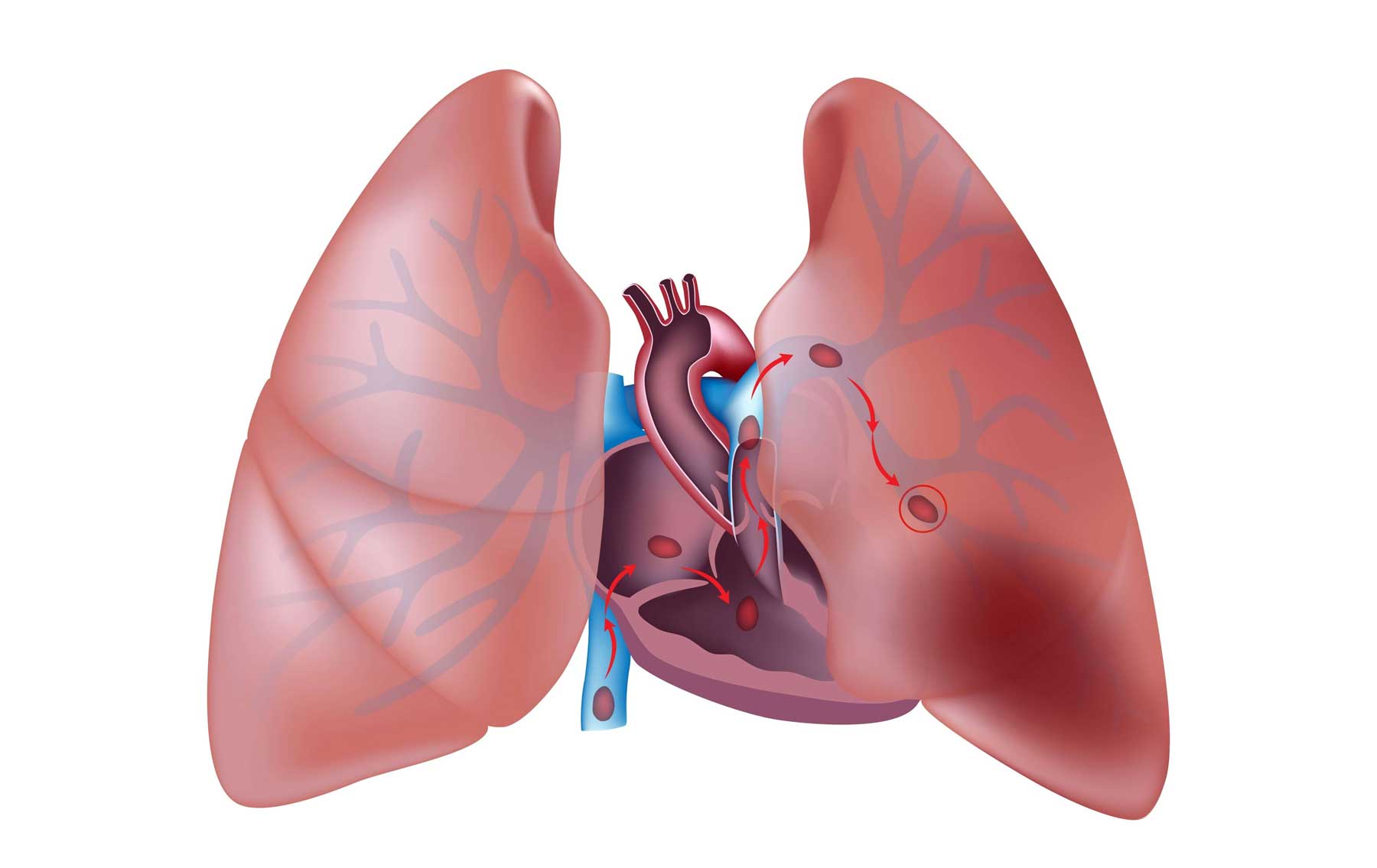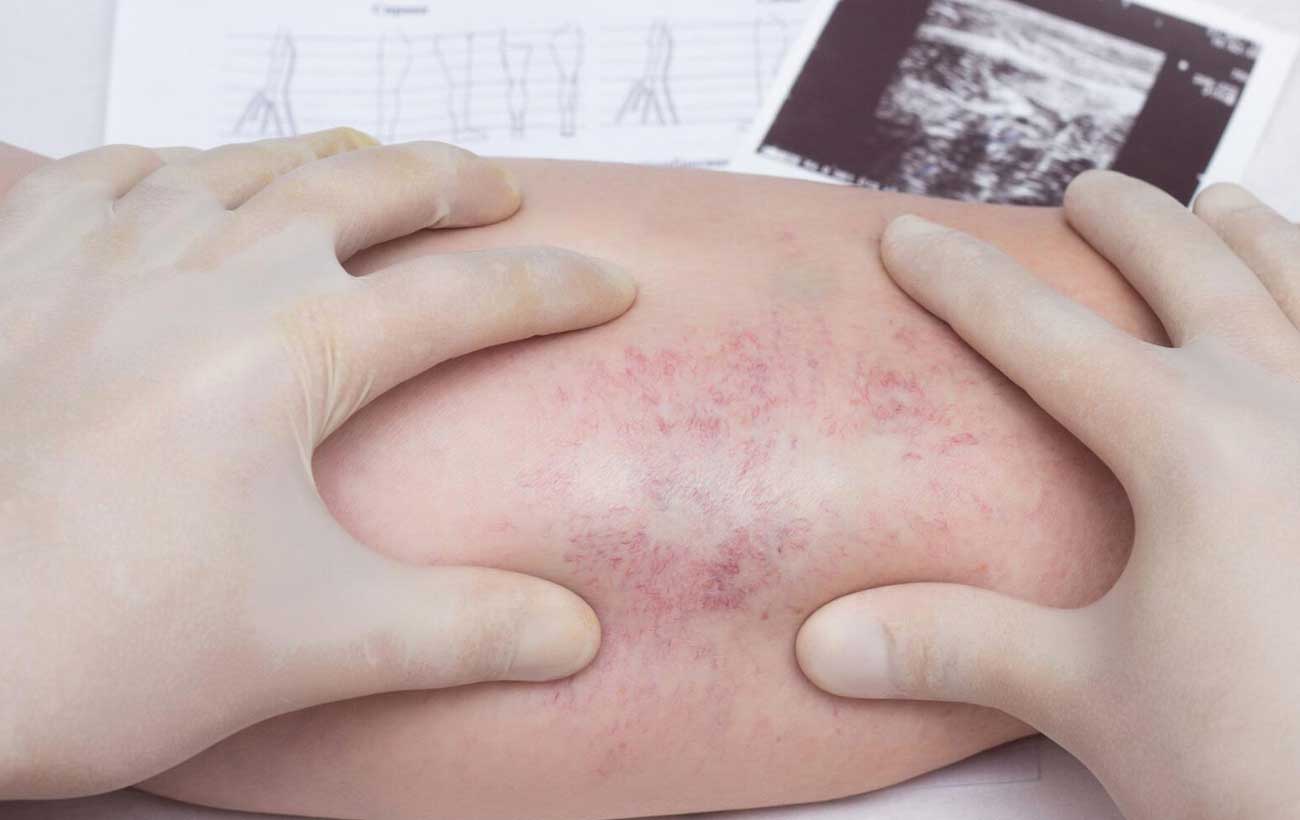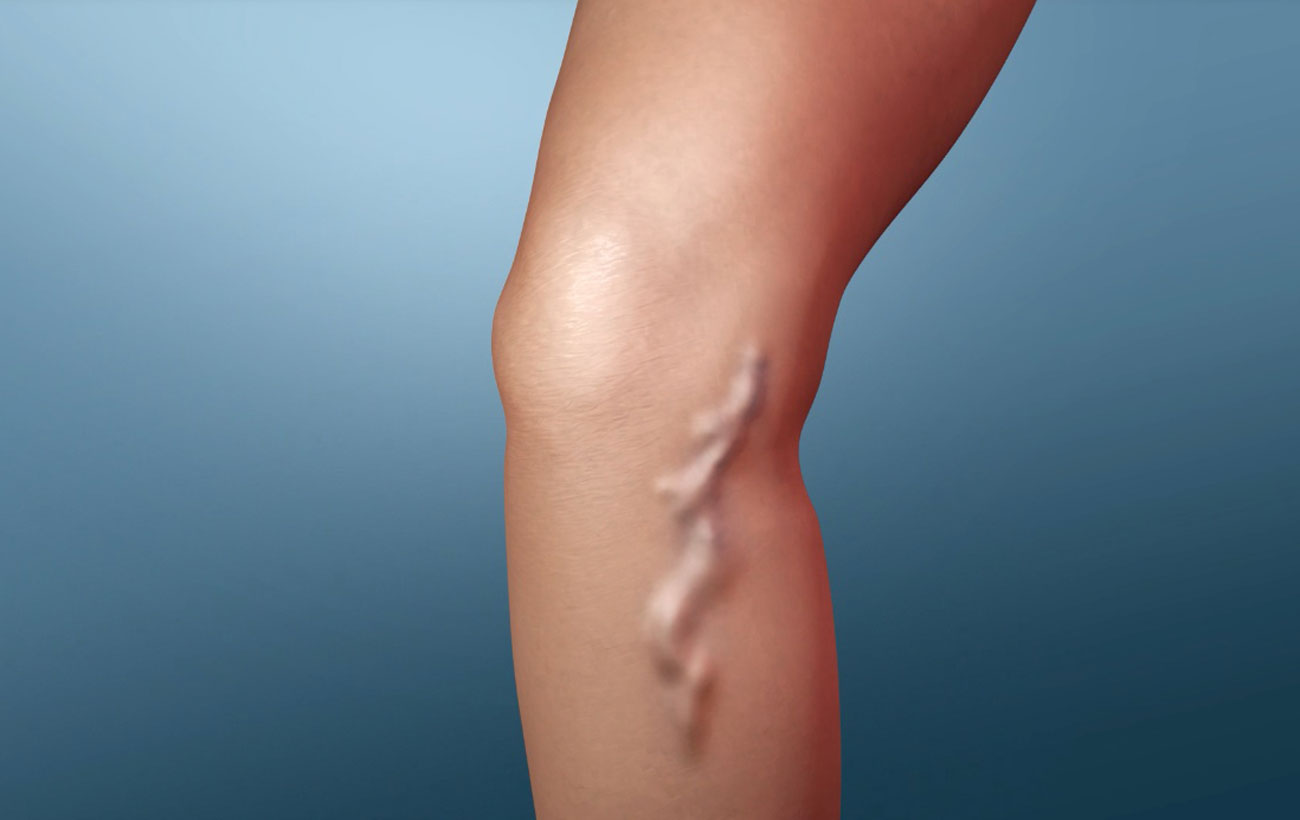Pulmonary Embolism Pulmonary embolism usually occurs as a serious complication of deep vein thrombosis. A…

Deep Vein Thrombosis
Thrombosis is the formation of a blood clot (thrombus), which can partially or completely block a blood vessel. If a blood clot forms in a deeper vein, the condition is called deep vein thrombosis. Although deep vein thrombosis occurs most frequently in the legs and lower abdomen, it can occur anywhere in the body. The two main causes of deep vein thrombosis are injury to the lining of a vein and sluggish blood flow.
If you are older or are overweight or if you have injured your pelvis or a bone in your leg, you have an increased risk of deep vein thrombosis. The condition often develops during periods of immobility, especially while recovering from surgery or serious illness. Thrombosis also frequently occurs when an arm or leg is immobilized in a cast to stabilize a broken bone, or in the legs after a long trip on a plane or train. In these situations, blood flow tends to become sluggish. The disorder may also affect people whose blood clots more easily than normal, such as those who have a genetic defect in blood-clotting factors or a disease such as systemic lupus erythematosus or polycythemia. Women over age 35 who smoke cigarettes and also take birth-control pills are at increased risk of thrombosis.
Symptoms
In deep vein thrombosis, the area drained by the vein, usually the calf or thigh, becomes swollen and painful as blood flow to it is obstructed. The pressure in the veins and capillaries in the leg increases, causing swelling. If the thrombosis is not in the leg, there may be no symptoms unless pieces of the clot break off, enter the bloodstream, and travel to the lungs, causing a pulmonary embolism. If the swelling is long-lasting, the skin may develop a brownish discoloration and may injure easily and develop frequent sores. If you have symptoms of deep vein thrombosis, see your doctor.
Treatments
If you have deep vein thrombosis, especially if blood clots have traveled to your lungs, your doctor will prescribe an anticoagulant drug to prevent clotting. The drugs are usually injected initially and then taken in pill form. Treatment is usually done on an outpatient basis. Because these drugs can cause bleeding if used incorrectly, you must take them exactly as prescribed, usually for about 6 months. Most clots are gradually reabsorbed into the bloodstream. In rare cases, surgery is necessary to remove blood clots.
If you are scheduled to have surgery, and your doctor thinks you may be at risk of developing deep vein thrombosis, he or she may give you injections of an anticoagulant drug such as heparin, either before or after surgery, to help prevent the formation of blood clots.
If you are confined to bed, your doctor will probably encourage you to flex your leg muscles, wiggle your toes, and bend your ankles to keep your blood circulating. If you are immobilized for a long period of time, your legs also may be mechanically elevated and placed in plastic sleeves called sequential compression devices (SCDs), which are alternately filled with air and deflated. The resulting pumping action keeps the blood flowing normally.



